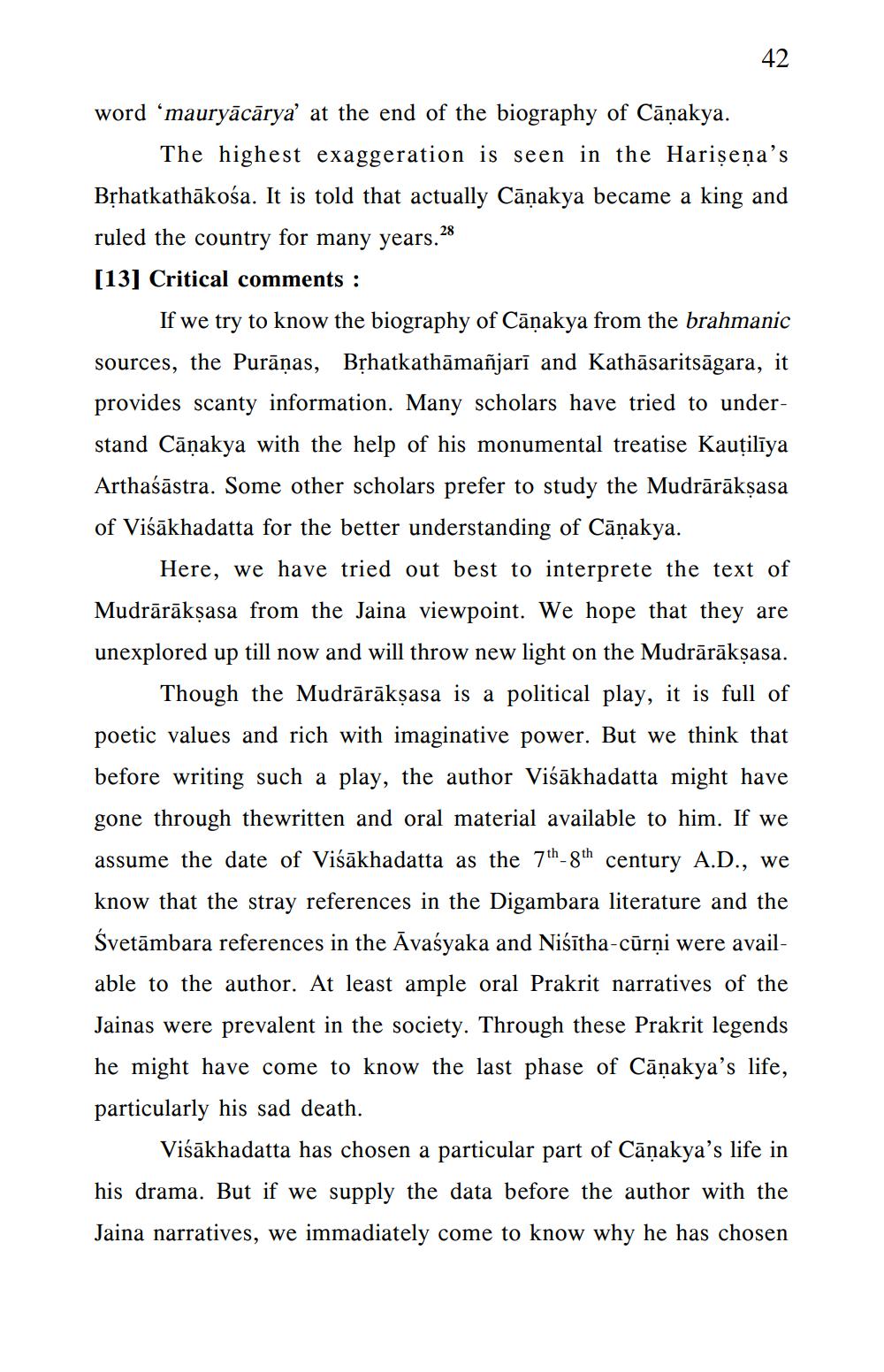________________
42
word ‘mauryācārya' at the end of the biography of Cāņakya.
The highest exaggeration is seen in the Harişeņa's Bịhatkathākośa. It is told that actually Cāņakya became a king and ruled the country for many years.28 [13] Critical comments :
If we try to know the biography of Cāņakya from the brahmanic sources, the Purāņas, Brhatkathāmañjarī and Kathāsaritsāgara, it provides scanty information. Many scholars have tried to understand Cāņakya with the help of his monumental treatise Kauțilīya Arthaśāstra. Some other scholars prefer to study the Mudrārākṣasa of Viśākhadatta for the better understanding of Cāņakya.
Here, we have tried out best to interprete the text of Mudrārākşasa from the Jaina viewpoint. We hope that they are unexplored up till now and will throw new light on the Mudrārākṣasa.
Though the Mudrārāksasa is a political play, it is full of poetic values and rich with imaginative power. But we think that before writing such a play, the author Viśākhadatta might have gone through thewritten and oral material available to him. If we assume the date of Viśākhadatta as the 7th-8th century A.D., we know that the stray references in the Digambara literature and the Śvetāmbara references in the Avaśyaka and Niśītha-cūrņi were available to the author. At least ample oral Prakrit narratives of the Jainas were prevalent in the society. Through these Prakrit legends he might have come to know the last phase of Cāņakya's life, particularly his sad death.
Viśākhadatta has chosen a particular part of Cāņakya's life in his drama. But if we supply the data before the author with the Jaina narratives, we immadiately come to know why he has chosen




